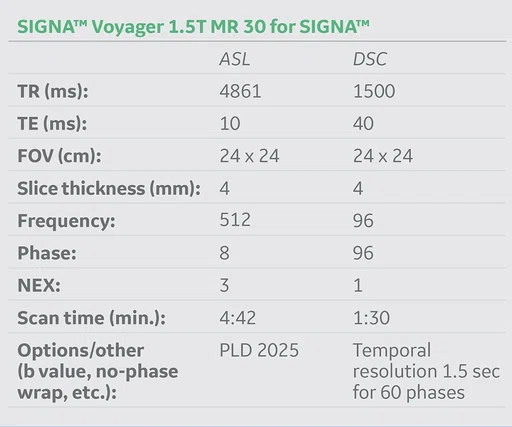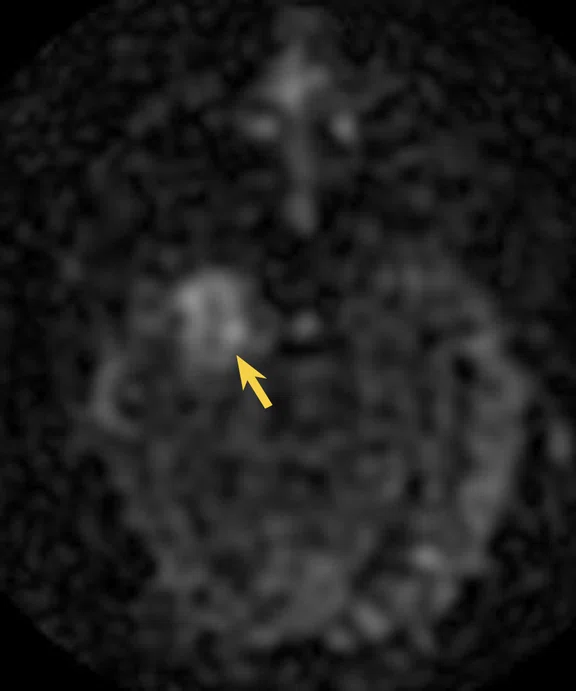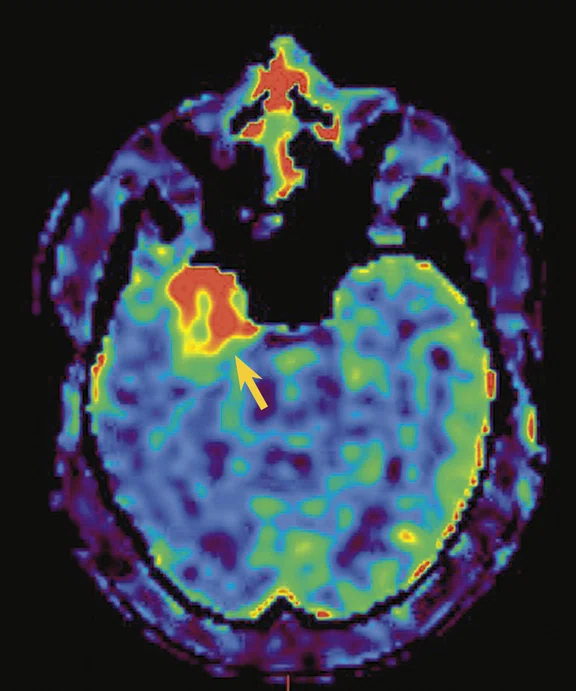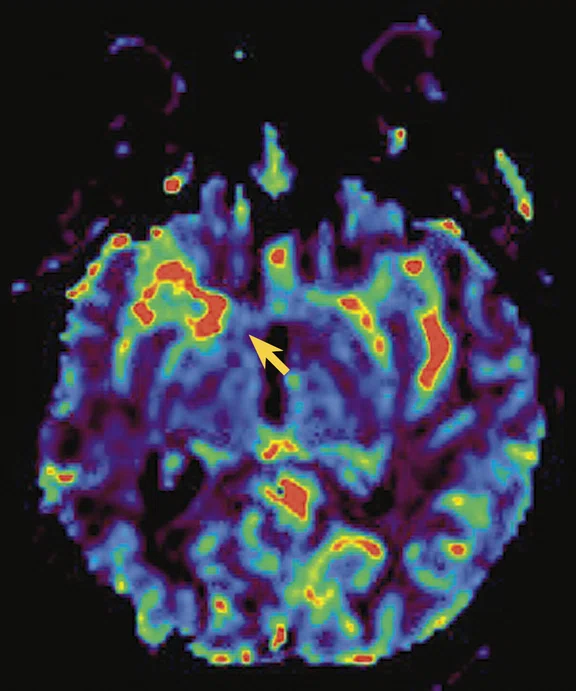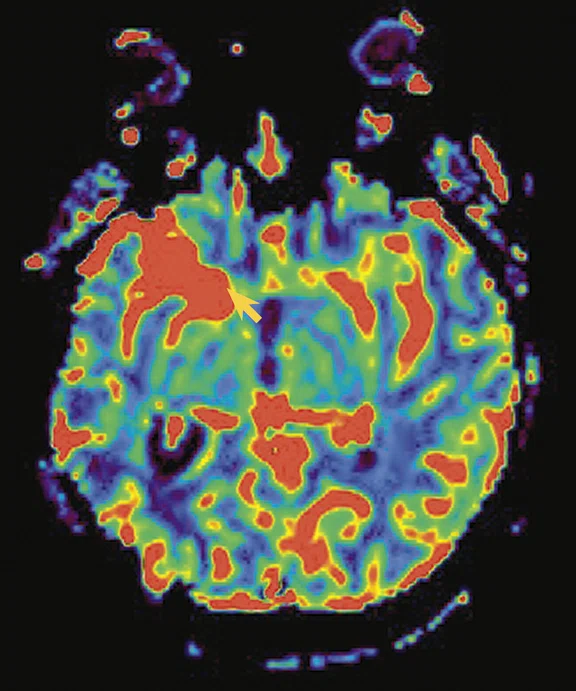A
Figure 1.
Follow-up exam of a brain tumor (arrow) featuring ASL versus EPI DSC. (A) Axial ASL, 4:18 min.; (B) CBF calculated from the ASL; and (C, D) rCBF, rCBV calculated from EPI DSC.
B
Figure 1.
Follow-up exam of a brain tumor (arrow) featuring ASL versus EPI DSC. (A) Axial ASL, 4:18 min.; (B) CBF calculated from the ASL; and (C, D) rCBF, rCBV calculated from EPI DSC.
C
Figure 1.
Follow-up exam of a brain tumor (arrow) featuring ASL versus EPI DSC. (A) Axial ASL, 4:18 min.; (B) CBF calculated from the ASL; and (C, D) rCBF, rCBV calculated from EPI DSC.
D
Figure 1.
Follow-up exam of a brain tumor (arrow) featuring ASL versus EPI DSC. (A) Axial ASL, 4:18 min.; (B) CBF calculated from the ASL; and (C, D) rCBF, rCBV calculated from EPI DSC.
result


PREVIOUS
${prev-page}
NEXT
${next-page}
Subscribe Now
Manage Subscription
FOLLOW US
Contact Us • Cookie Preferences • Privacy Policy • California Privacy PolicyDo Not Sell or Share My Personal Information • Terms & Conditions • Security
© 2024 GE HealthCare. GE is a trademark of General Electric Company. Used under trademark license.
CASE STUDIES
Enhanced tissue differentiation in surgical oncology planning
Enhanced tissue differentiation in surgical oncology planning
By Andrea Romano, MD, Neuroradiologist Researcher, AOU Sant’ Andrea Hospital, Rome, Italy
It is necessary to provide surgeons with detailed information about vascular structures in patients who are undergoing surgery for brain tumors, such as gliomas. In some challenging patients, a non-contrast technique may be preferred to provide the information needed regarding cerebral blood flow (CBF).
MR 30 for SIGNA™ includes advancements in perfusion SNR and increased robustness to flow pulsatility with the new user-selectable label duration for 3D pCASL. This case demonstrates the difference in signal between DSC and ASL, as the updated ASL feature provides a more homogeneous signal without areas of overestimation of the flow in terms of CBF. The temporal lesion suffers from disturbance of magnetic susceptibility, while the ASL technique can be utilized on a broader population of patients with an excellent quantitative result and robust data compared to the conventional DSC technique.
Patient History
A 70-year-old patient with a high-grade multicentric glioma underwent an MR for right temporoparietal pre-surgical planning.
Results
The pCASL exam shows two sites of pathological enhancement after contrast administration in the right temporopolar site and close to the surgical site, in the latter site with a pseudocystic appearance.
Discussion
The pCASL technique shows an increase of the CBF parameter in the right temporopolar region and not in the temporoparietal area, allowing us to differentiate tissue with a high degree of anaplastic condition compared to post-treatment phenomena. A similar result can be seen in the acquisitions with the DSC technique.
The advantage of the new longer labeling time with pCASL in MR 30 for SIGNA™ delivers the same result as DSC but without the administration of paramagnetic contrast medium. Also, the new ASL in MR 30 for SIGNA™ generates less flow overestimation, which is particularly important in cases such as the one presented here where the lesion is adjacent to vascular structures and could otherwise impact interpretation of the data.
We noticed a better signal in the ASL acquisition in terms of signal homogeneity, especially in this clinical case where the lesion was in an area of the tissue-air interface near the temporal lobe. The signal was very homogeneous, allowing us to provide the information the surgeon needed for surgical planning.
ASL Flexible Label Duration
A long-awaited update to GE HealthCare’s 3D pCASL application brings a user-selectable label duration. The longer labeling time will result in improved perfusion SNR and increased robustness to flow pulsatility. This update aligns with the 2022 ISMRM Perfusion Study Group recommendation of long label/long delay acquisition for imaging of geriatric, ischemic and steno-occlusive disease patients where transit times are known to be longer.
A long-awaited update to GE HealthCare’s 3D pCASL application brings a user-selectable label duration. The longer labeling time will result in improved perfusion SNR and increased robustness to flow pulsatility. This update aligns with the 2022 ISMRM Perfusion Study Group recommendation of long label/long delay acquisition for imaging of geriatric, ischemic and steno-occlusive disease patients where transit times are known to be longer.










